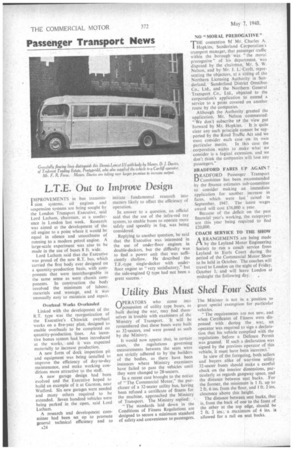Utility Bus Must Shed Four Seats O PERATORS who come into
Page 26

If you've noticed an error in this article please click here to report it so we can fix it.
1---/possession of utility type buses, as built during the war, may find themselves in trouble with examiners of the Ministry of Transport. It will be remembered that these buses were built as 32-seaters, and were passed as such by the Ministry.
It would now appear that, in certain cases, the regulations governing measurements between the seats were not strictly adhered to by the builders of the bodies, as there have been instances where Ministry examiners have failed to pass the vehicles until they were changed to 28-seaters.
In a recent case brought to the notice of "The Commercial Motor," the purchaser of a 32-seater utility bus, having been refused a certificate of fitness for the machine, approached the Ministry of Transport. The Ministry replied: • "The standards laid down in the Conditions of Fitness Regulations are designed to secure a minimum standard of safety and convenience to passengers. The Minister is not in a position to grant special exemption for particular vehicles.
The requirements are not new, and when Certificates of Fitness were dispensed with during the war, an operator was required to sign a declaration that his vehicle complied with the regulations before a Defence Permit was granted. If such a declaration was signed by the previous operator of this vehicle, it must have been incorrect.'' In view of the foregoing, both sellers and buyers alike of war-time utility 32-seater buses should make a careful check on the interior dimensions, particularly as regards gangway space, and the distance between seat backs. For the former, the minimum is 1 ft. up to 2 ft. 6 ins, from the floor, and 1 ft. 2 ins. clearance above this height.
The distance between seat backs, that is, from the back of one to the front of the other at the top edge, should be 2 ft. 2 ins.; a maximum of 4 ins, is allowed for a rail on seat backs.












































































